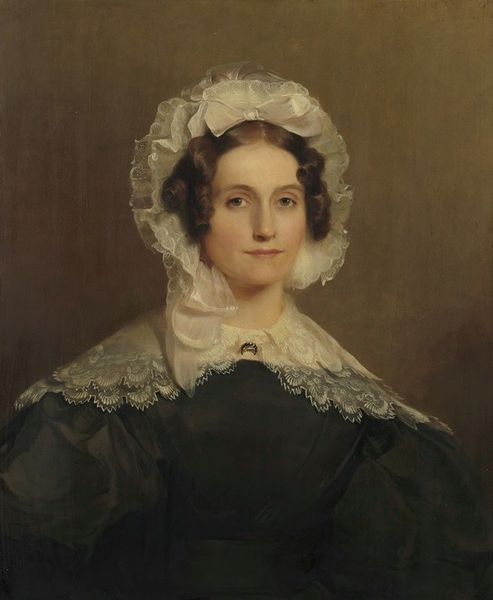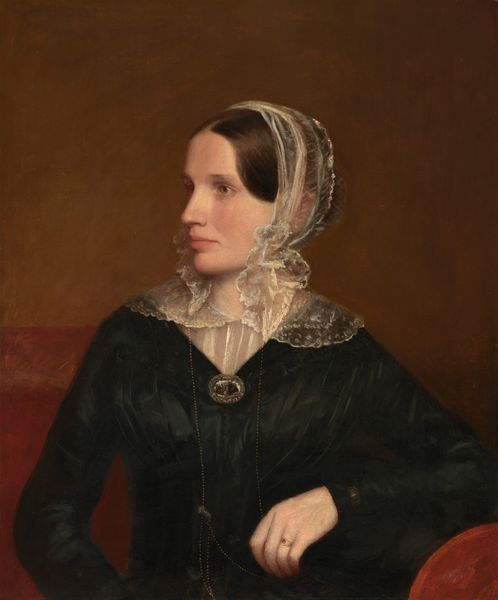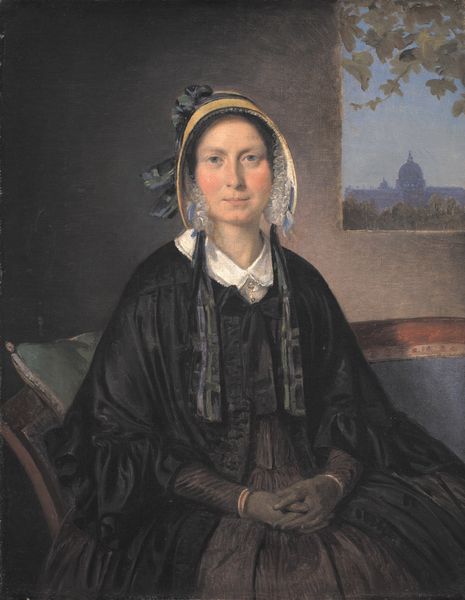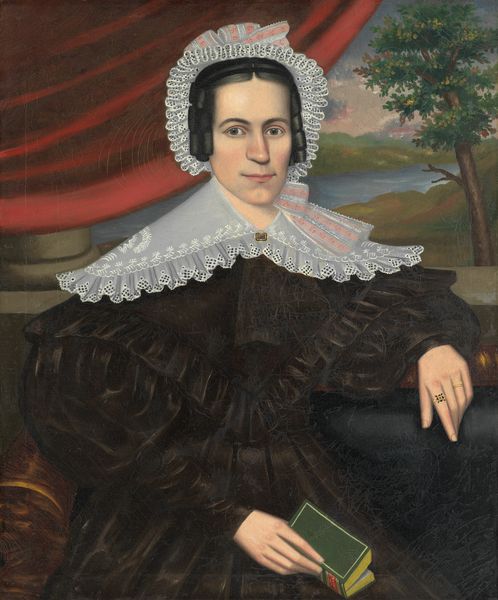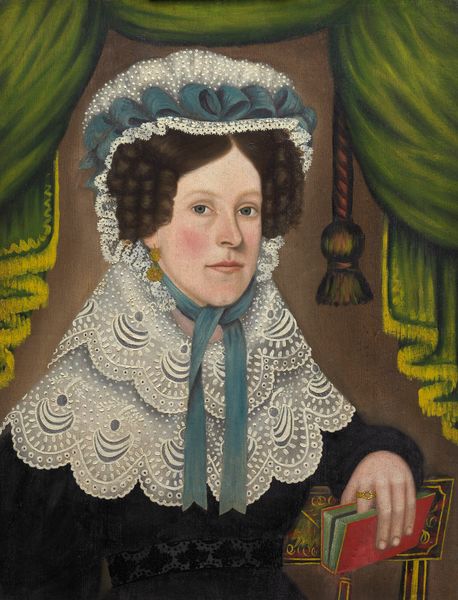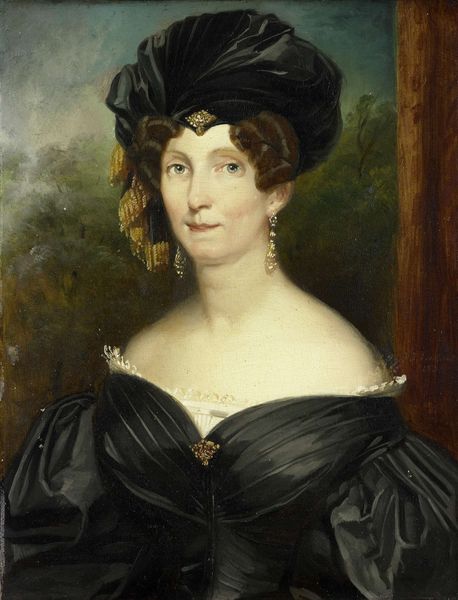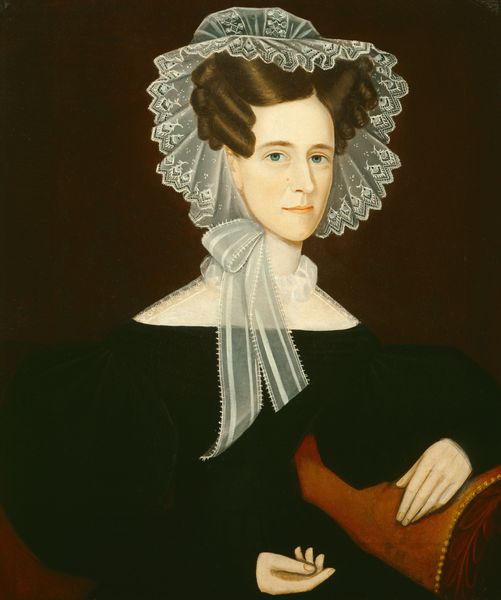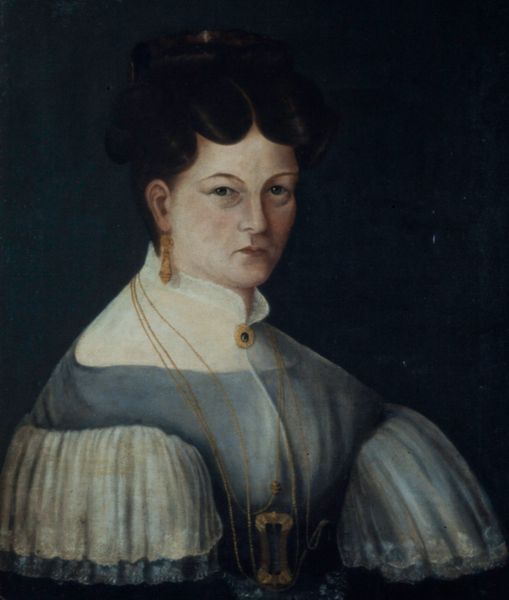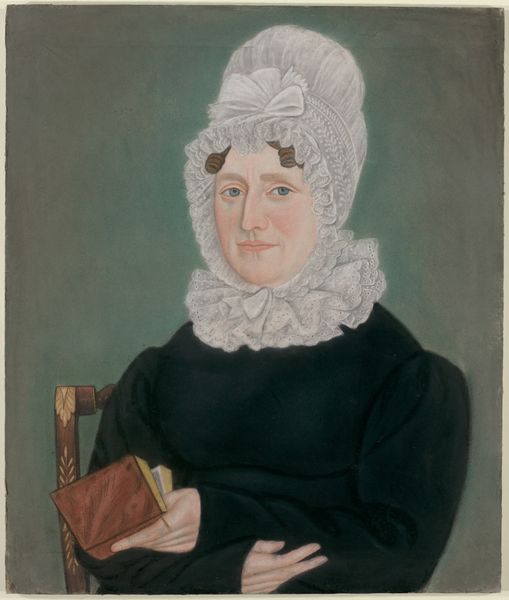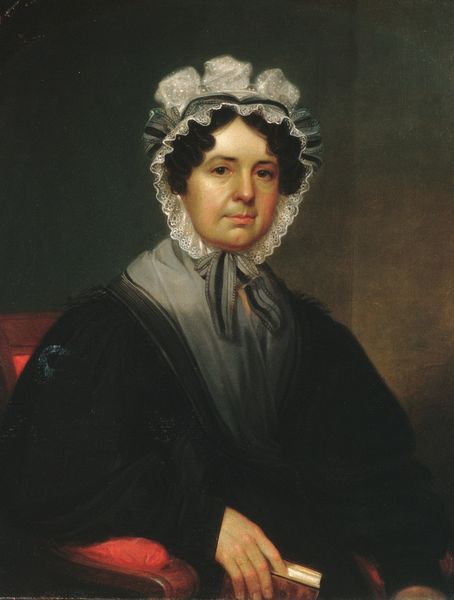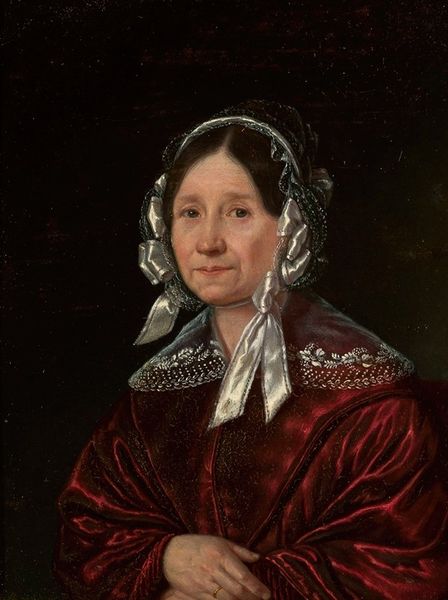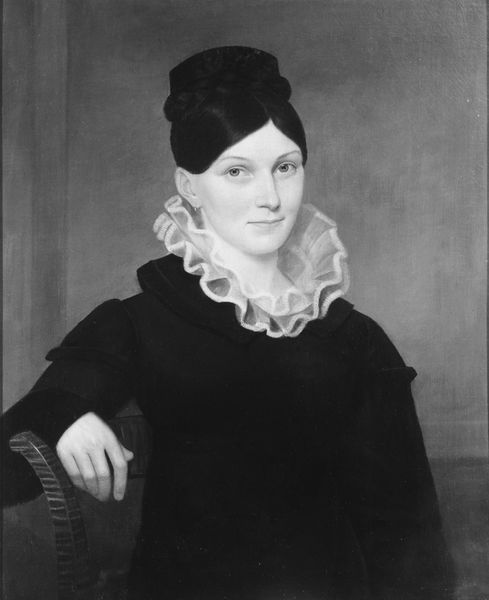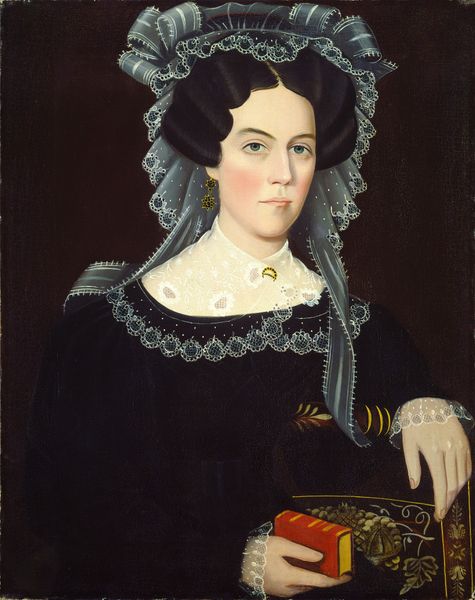
painting, oil-paint
#
portrait
#
painting
#
oil-paint
#
romanticism
#
genre-painting
#
academic-art
Dimensions: overall: 83.7 x 68.5 cm (32 15/16 x 26 15/16 in.) framed: 93.3 x 78.1 x 7.6 cm (36 3/4 x 30 3/4 x 3 in.)
Copyright: National Gallery of Art: CC0 1.0
Curator: Here we have Ammi Phillips' portrait of "Jane Storm Teller," likely completed around 1835. Note how Phillips positions his sitter against a rich, dark background, a compositional element prevalent in portraits of this era aiming to emphasize the subject's social standing. Editor: My immediate thought goes to the textures. Look at the crispness of that lace collar against the dark, almost velvety fabric of her dress. I wonder what kind of weaving went into it. It's clearly designed to signal her social class. Curator: Absolutely. Portraits like these were more than just likenesses; they were carefully constructed visual statements. The book she holds, the elegant lace, even the placement of her hand—it all speaks to a desired image. It subtly tells a story of refinement, a deliberate presentation to the public. Editor: Right, it makes you consider the labour behind her presentation. How long did it take to construct those layers? Did she make them herself? You know, those things aren’t spontaneous— the craft that is included is telling. Curator: Probably not entirely herself. Her family might have had maids that did most of this work. What's also intriguing to consider is where these portraits were displayed and how they functioned within the domestic space, almost like early social media influencing family reputation within social circles. Editor: Fascinating. Thinking about that fabric though, you said it's likely oil on canvas. I find that transition from raw material to finished image, it's where labour becomes legacy and social identity gets materially embodied. Curator: Exactly! These images weren’t just aesthetic; they actively participated in constructing social narratives, visually reinforcing a specific hierarchy. Ammi Philips made countless portraits just like this one, essentially reinforcing an accepted cultural imagery for those with power and money. Editor: I keep coming back to her face. It strikes me as… thoughtful? Contemplative, more so than I’d expect for what you say is intended to reinforce hierarchy and status. She almost looks rebellious. Curator: Well, there's always room for individual interpretation. However, given the conventions of portraiture in the 1830s, perhaps that "thoughtfulness" served to project an image of intellect and education, desirable traits in a woman of her station. It wasn’t necessarily an act of rebellion. Editor: True enough, perhaps that tension between imposed ideals and the hint of personal expression makes the artwork so lasting. It brings the history of material, production and the personal feeling close. Curator: I think it also prompts a richer engagement with how art reflects and influences the ever-evolving social tapestry in our world.
Comments
No comments
Be the first to comment and join the conversation on the ultimate creative platform.
